Axel Barrau
CAOR
Learnable Adaptive Time-Frequency Representation via Differentiable Short-Time Fourier Transform
Jun 26, 2025Abstract:The short-time Fourier transform (STFT) is widely used for analyzing non-stationary signals. However, its performance is highly sensitive to its parameters, and manual or heuristic tuning often yields suboptimal results. To overcome this limitation, we propose a unified differentiable formulation of the STFT that enables gradient-based optimization of its parameters. This approach addresses the limitations of traditional STFT parameter tuning methods, which often rely on computationally intensive discrete searches. It enables fine-tuning of the time-frequency representation (TFR) based on any desired criterion. Moreover, our approach integrates seamlessly with neural networks, allowing joint optimization of the STFT parameters and network weights. The efficacy of the proposed differentiable STFT in enhancing TFRs and improving performance in downstream tasks is demonstrated through experiments on both simulated and real-world data.
Invariant filtering for wheeled vehicle localization with unknown wheel radius and unknown GNSS lever arm
Sep 11, 2024

Abstract:We consider the problem of observer design for a nonholonomic car (more generally a wheeled robot) equipped with wheel speeds with unknown wheel radius, and whose position is measured via a GNSS antenna placed at an unknown position in the car. In a tutorial and unified exposition, we recall the recent theory of two-frame systems within the field of invariant Kalman filtering. We then show how to adapt it geometrically to address the considered problem, although it seems at first sight out of its scope. This yields an invariant extended Kalman filter having autonomous error equations, and state-independent Jacobians, which is shown to work remarkably well in simulations. The proposed novel construction thus extends the application scope of invariant filtering.
Invariant Smoothing for Localization: Including the IMU Biases
Sep 25, 2023

Abstract:In this article we investigate smoothing (i.e., optimisation-based) estimation techniques for robot localization using an IMU aided by other localization sensors. We more particularly focus on Invariant Smoothing (IS), a variant based on the use of nontrivial Lie groups from robotics. We study the recently introduced Two Frames Group (TFG), and prove it can fit into the framework of Invariant Smoothing in order to better take into account the IMU biases, as compared to the state-of-the-art in robotics. Experiments based on the KITTI dataset show the proposed framework compares favorably to the state-of-the-art smoothing methods in terms of robustness in some challenging situations.
Differentiable adaptive short-time Fourier transform with respect to the window length
Jul 26, 2023



Abstract:This paper presents a gradient-based method for on-the-fly optimization for both per-frame and per-frequency window length of the short-time Fourier transform (STFT), related to previous work in which we developed a differentiable version of STFT by making the window length a continuous parameter. The resulting differentiable adaptive STFT possesses commendable properties, such as the ability to adapt in the same time-frequency representation to both transient and stationary components, while being easily optimized by gradient descent. We validate the performance of our method in vibration analysis.
Differentiable short-time Fourier transform with respect to the hop length
Jul 26, 2023Abstract:In this paper, we propose a differentiable version of the short-time Fourier transform (STFT) that allows for gradient-based optimization of the hop length or the frame temporal position by making these parameters continuous. Our approach provides improved control over the temporal positioning of frames, as the continuous nature of the hop length allows for a more finely-tuned optimization. Furthermore, our contribution enables the use of optimization methods such as gradient descent, which are more computationally efficient than conventional discrete optimization methods. Our differentiable STFT can also be easily integrated into existing algorithms and neural networks. We present a simulated illustration to demonstrate the efficacy of our approach and to garner interest from the research community.
A differentiable short-time Fourier transform with respect to the window length
Aug 25, 2022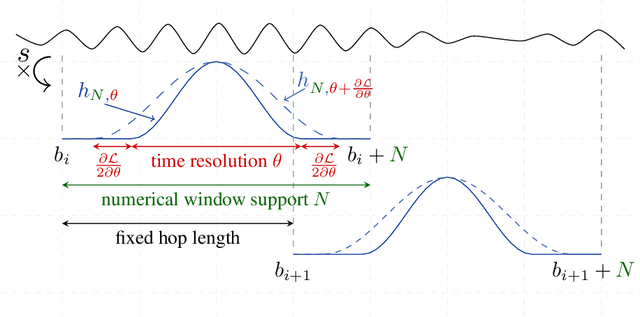
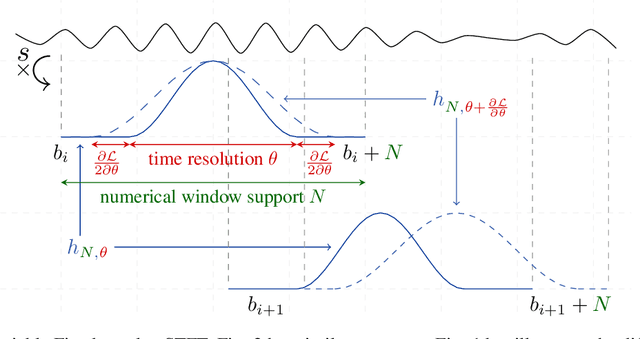
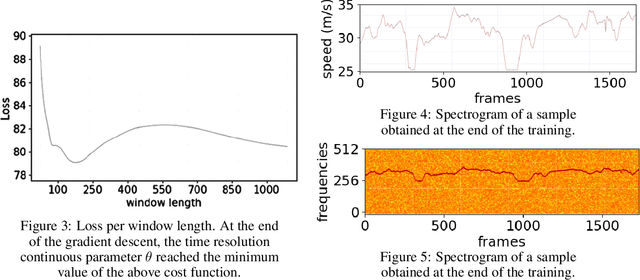
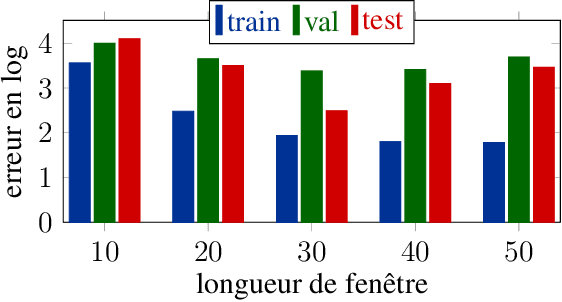
Abstract:In this paper, we revisit the use of spectrograms in neural networks, by making the window length a continuous parameter optimizable by gradient descent instead of an empirically tuned integer-valued hyperparameter. The contribution is mostly theoretical at this point, but plugging the modified STFT into any existing neural network is straightforward. We first define a differentiable version of the STFT in the case where local bins centers are fixed and independent of the window length parameter. We then discuss the more difficult case where the window length affects the position and number of bins. We illustrate the benefits of this new tool on an estimation and a classification problems, showing it can be of interest not only to neural networks but to any STFT-based signal processing algorithm.
Invariant Smoothing with low process noise
Apr 05, 2022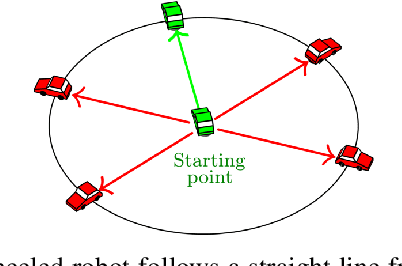
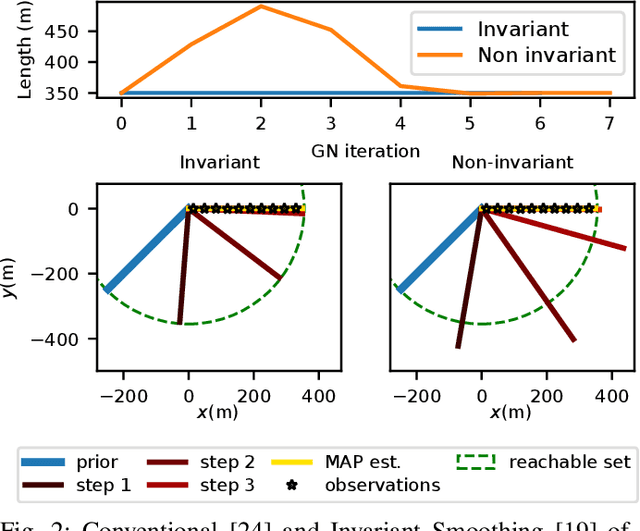
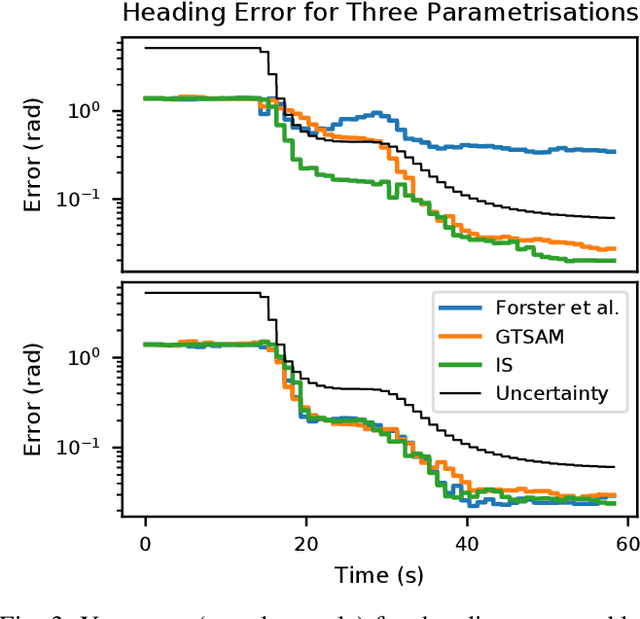
Abstract:In this paper we address smoothing-that is, optimisation-based-estimation techniques for localisation problems in the case where motion sensors are very accurate. Our mathematical analysis focuses on the difficult limit case where motion sensors are infinitely precise, resulting in the absence of process noise. Then the formulation degenerates, as the dynamical model that serves as a soft constraint becomes an equality constraint, and conventional smoothing methods are not able to fully respect it. By contrast, once an appropriate Lie group embedding has been found, we prove theoretically that invariant smoothing gracefully accommodates this limit case in that the estimates tend to be consistent with the induced constraints when the noise tends to zero. Simulations on the important problem of initial alignement in inertial navigation show that, in a low noise setting, invariant smoothing may favorably compare to state-of-the-art smoothers when using precise inertial measurements units (IMU).
The Geometry of Navigation Problems
Feb 06, 2022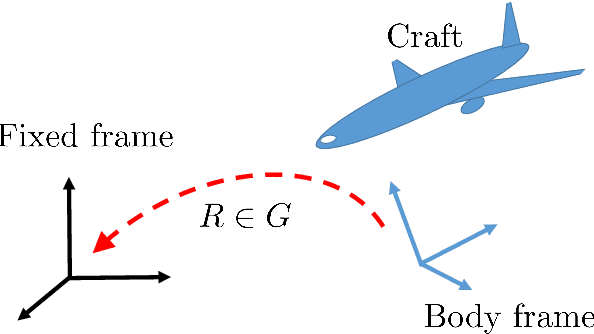
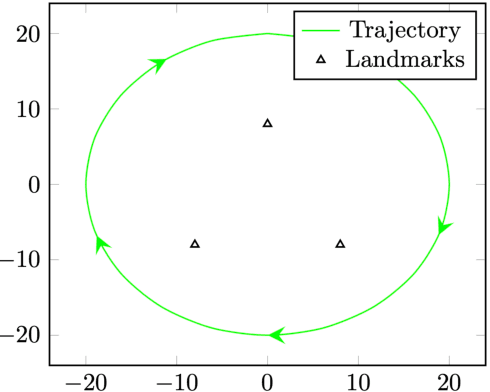
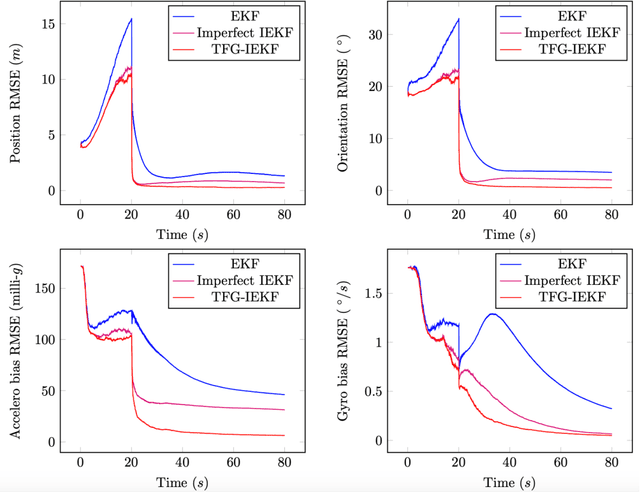
Abstract:While many works exploiting an existing Lie group structure have been proposed for state estimation, in particular the Invariant Extended Kalman Filter (IEKF), few papers address the construction of a group structure that allows casting a given system into the framework of invariant filtering. In this paper we introduce a large class of systems encompassing most problems involving a navigating vehicle encountered in practice. For those systems we introduce a novel methodology that systematically provides a group structure for the state space, including vectors of the body frame such as biases. We use it to derive observers having properties akin to those of linear observers or filters. The proposed unifying and versatile framework encompasses all systems where IEKF has proved successful, improves state-of-the art "imperfect" IEKF for inertial navigation with sensor biases, and allows addressing novel examples, like GNSS antenna lever arm estimation.
Factor Graph-Based Smoothing Without Matrix Inversion for Highly Precise Localization
Sep 22, 2020
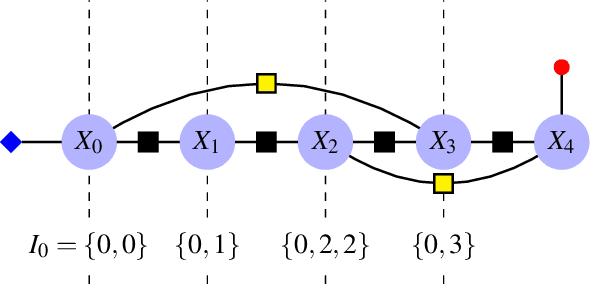
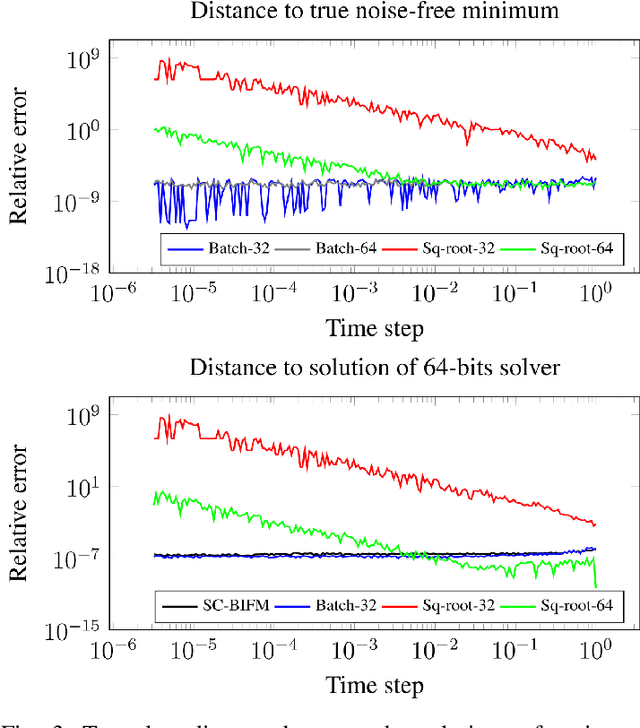
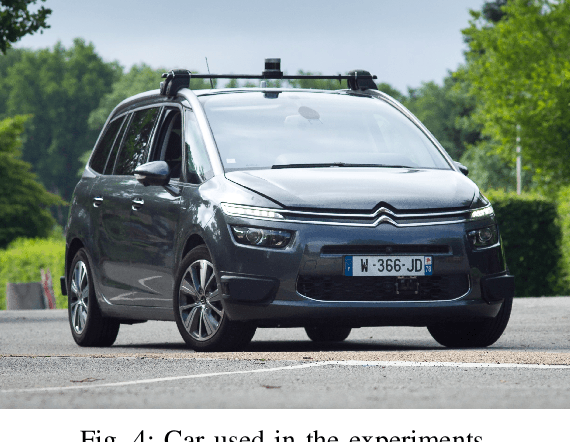
Abstract:We consider the problem of localizing a manned, semi-autonomous, or autonomous vehicle in the environment using information coming from the vehicle's sensors, a problem known as navigation or simultaneous localization and mapping (SLAM) depending on the context. To infer knowledge from sensors' measurements, while drawing on a priori knowledge about the vehicle's dynamics, modern approaches solve an optimization problem to compute the most likely trajectory given all past observations, an approach known as smoothing. Improving smoothing solvers is an active field of research in the SLAM community. Most work is focused on reducing computation load by inverting the involved linear system while preserving its sparsity. The present paper raises an issue which, to the knowledge of the authors, has not been addressed yet: standard smoothing solvers require explicitly using the inverse of sensor noise covariance matrices. This means the parameters that reflect the noise magnitude must be sufficiently large for the smoother to properly function. When matrices are close to singular, which is the case when using high precision modern inertial measurement units (IMU), numerical issues necessarily arise, especially with 32-bits implementation demanded by most industrial aerospace applications. We discuss these issues and propose a solution that builds upon the Kalman filter to improve smoothing algorithms. We then leverage the results to devise a localization algorithm based on fusion of IMU and vision sensors. Successful real experiments using an actual car equipped with a tactical grade high performance IMU and a LiDAR illustrate the relevance of the approach to the field of autonomous vehicles.
Associating Uncertainty to Extended Poses for on Lie Group IMU Preintegration with Rotating Earth
Jul 28, 2020



Abstract:The recently introduced matrix group SE2(3) provides a 5x5 matrix representation for the orientation, velocity and position of an object in the 3-D space, a triplet we call ''extended pose''. In this paper we build on this group to develop a theory to associate uncertainty with extended poses represented by 5x5 matrices. Our approach is particularly suited to describe how uncertainty propagates when the extended pose represents the state of an Inertial Measurement Unit (IMU). In particular it allows revisiting the theory of IMU preintegration on manifold and reaching a further theoretic level in this field. Exact preintegration formulas that account for rotating Earth, that is, centrifugal force and Coriolis force, are derived as a byproduct, and the factors are shown to be more accurate. The approach is validated through extensive simulations and applied to sensor-fusion where a loosely-coupled fixed-lag smoother fuses IMU and LiDAR on one hour long experiments using our experimental car. It shows how handling rotating Earth may be beneficial for long-term navigation within incremental smoothing algorithms.
 Add to Chrome
Add to Chrome Add to Firefox
Add to Firefox Add to Edge
Add to Edge